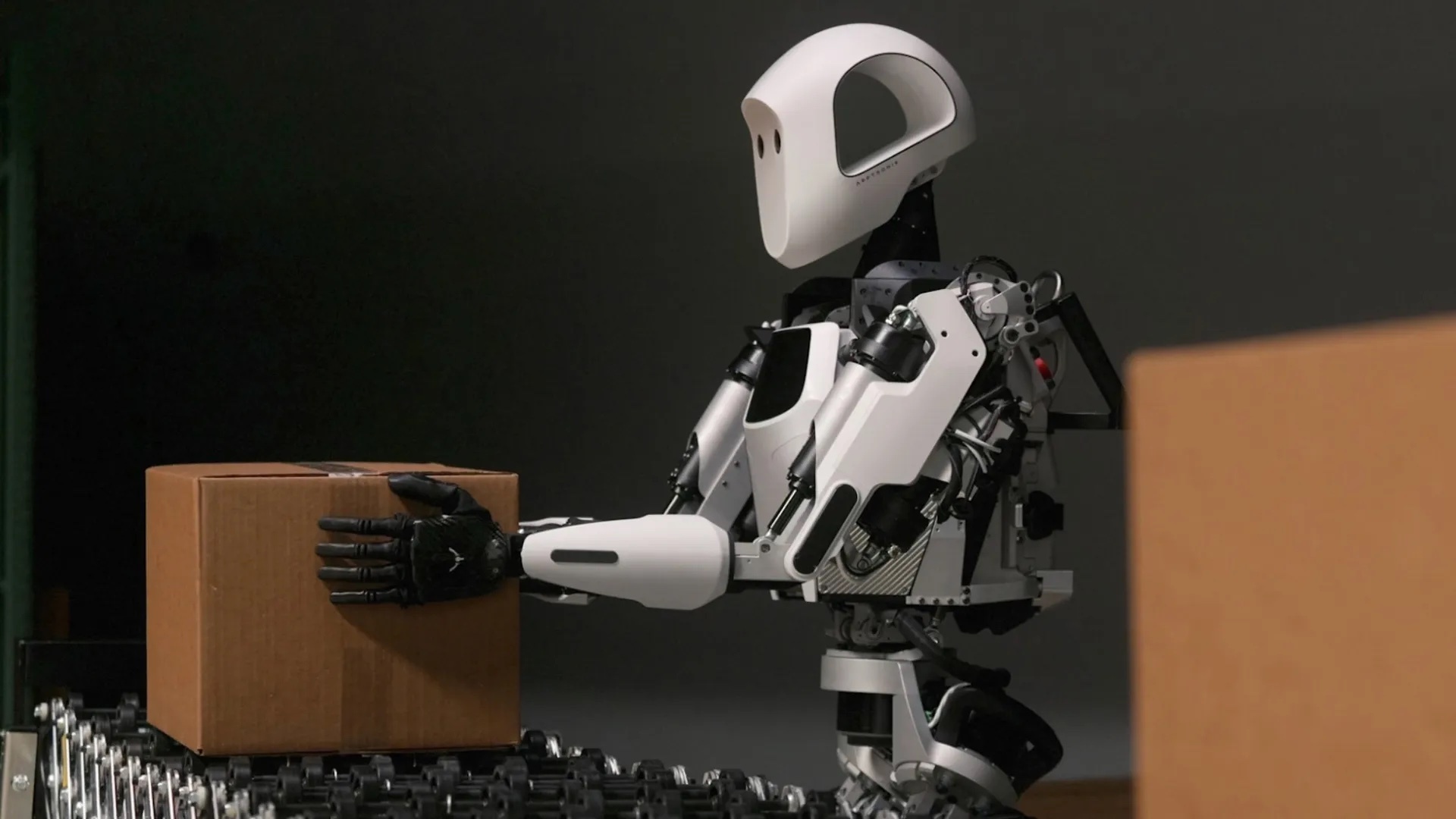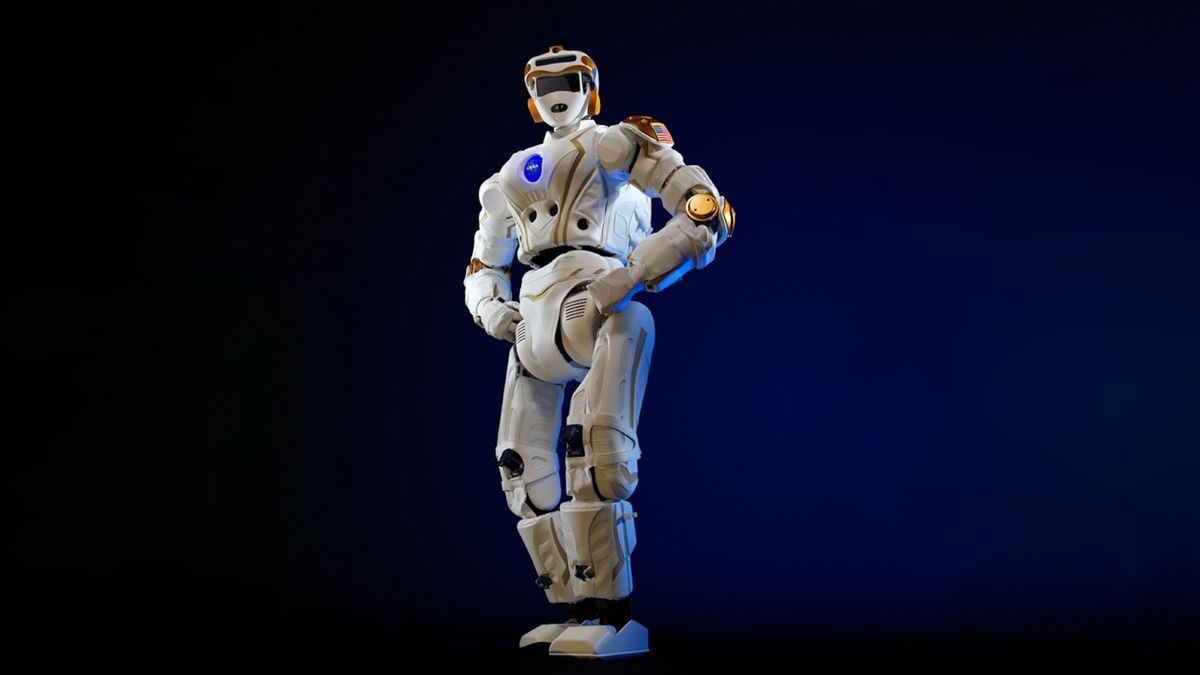19.09.2023
NASA is eyeing a privately built 'Apollo' space robot for continued investment — and future space missions.

Apptronik's Apollo robot demonstrating modular manual dexterity using a logistics exercise. (Image credit: Apptronik, Inc.)
NASA has teamed up with a small robotics firm in Texas to continue the space agency's decades of work developing humanoid robots. Soon, such robots may be sent to orbit, or even other planets, to help astronauts with their work.
Texas-based Apptronik, Inc. has long collaborated with NASA under the Small Business Innovation Research (SBIR) contracts program to hone the capabilities of Apollo, a humanoid robot that the company is developing to handle terrestrial tasks like logistics, manufacturing, and home healthcare assistance. NASA, meanwhile, has taken a keen interest in adapting Apollo (and robots like it) to become assistants for astronauts living and working in orbit, as well as on the moon and even Mars.
They might even one day function as remote-controlled "avatars" on other worlds for Earth-based human operators to pilot.
Apptronik has put special emphasis on the modularity of Apollo's design, specifically its adaptability for logistics tasks. Standing at 5'8" tall and weighing 160 pounds (73 kilograms), Apptronik says on its website that Apollo will have a run time of about four hours per battery pack and a payload capacity of 55 pounds (25 kg). As such, even though its main market right now is more Earth-bound customers, namely retail operations, warehousing and manufacturing, NASA's interest shouldn't be a surprise.
Apollo's promised flexibility would mean that it should have some degree of reprogrammability and physical customization. It already features varying dexterity levels, autonomous functions and different tools it can be equipped with, but more functionality will likely evolve as development progresses.
To that end, NASA has been lending its own decades of expertise in robotics to help the development of Apollo in areas like robotic mobility and software design principles for safe human-robot interactions.
"By applying NASA's expertise in human-safe mobile robots to commercial projects, together we are able to spur innovation in this important field," Shaun Azimi, head of the dexterous robotics team at NASA's Johnson Space Center, said in a NASA statement. "We are proud to see our efforts result in robotics technology that will benefit the American economy and assist humans in working safely and productively here on Earth and potentially in space exploration as well."
It's not hard to see how unloading a lunar lander with a robot rather than a human would be a much safer and efficient operation for any crewed landings on the moon or Mars. And, given the unforgiving environment on both worlds, robots will almost certainly have to be an integral part of either mission if it is going to succeed long term.
Robots in the form of special-purpose landers, rovers and even an aerial drone are already operating on other worlds, but general-purpose robots are a whole other matter entirely. Such robots would be able to tackle tedious or perilous tasks on the lunar or Martian surface far more easily and safely than a human could, and in principle should be able to be reprogrammed as needed to carry out a new task whenever it was required — even those its designers hadn't conceived of when they built it.
Having such robots at human explorers' disposal would allow astronauts and Earth-based operations to emphasize scientific pursuits and other more important assignments than things like constructing a shelter or digging up rock samples.
Additionally, these robots could assist in operating and maintaining mining and manufacturing facilities on other worlds that could process native resources in situ, an arrangement that would dramatically reduce the cost of maintaining these missions for NASA. After all, it'd be far cheaper and practical to build a human habitat out of concrete made from lunar regolith than it would be to ship one all the way from Earth.
So, incorporating robots into future missions of NASA's Artemis program might prove critical to creating a sustainable human presence on the moon and, one day, Mars. Naturally, then, it's no surprise that NASA has so many robotic irons in the fire.
Similar to Apptronik's Apollo robot, NASA's Jet Propulsion Laboratory is running the CoSTAR project, an initiative that focuses on tailoring commercially available robots to autonomously navigate the moon and Mars's subsurface terrains.

NASA's R5 humanoid robot, also known as Valkyrie, was an entry into DARPA's Robotics Challenge Trials in 2013 but has grown in scope since. (Image credit: NASA)
We also can't forget NASA's Dragonflymission, which is due to launch in 2027 and will land an autonomous rotorcraft on Saturn's largest moon, Titan, in 2034. This robot will fly over the Titanian landscape farther and faster than any land-bound rover could ever do, and the rotorcraft's development is a major undertaking for the agency with some very high stakes.
And while NASA's current humanoid robot, Valkyrie, could be capable of the kind of astronaut assistance envisioned for Apptronik's Apollo, adapting in-development or already existing commercial robots for space operations is too promising a direction for the agency to ignore.
NASA's Commercial Crew Program does something similar when it contracts out private vehicles (like SpaceX's Crew Dragon) for spaceflights rather than building its own bespoke rockets and capsules, and the program has been instrumental in revitalizing America's space industry over the last several years while saving NASA tens of billions of dollars. It would make sense to apply the same strategy for space robots, especially given the level of maturity in the private robotics industry, advocates say.
It's not all to the benefit of just NASA, however. Just as the Apollo program in the 1960s and 1970s was one of the principal drivers of semiconductor development in the United States, NASA's collaboration and funding of advanced robotics development will almost certainly benefit the economy at large in unpredictable ways. But it's almost a guarantee that the technology created for NASA's upcoming missions will eventually be turned to serving the needs of consumers and other segments of society, like university researchers and non-governmental organizations' operations.
Just as Silicon Valley's integrated circuits moved from the Apollo Guidance Computer into personal computers in people's homes in just a decade, development of advanced robotics for space will have far-reaching impacts on autonomous vehicles, manufacturing and much more, and their impact will be more acutely felt by society as a whole.
Even if truly functional humanoid space robots are many years away at the earliest (if they ever do come about), the investments that NASA is making now should speed up the deployment of more practical robotics here on Earth, which is almost as good, really, and a lot more practical.
Quelle: SC

